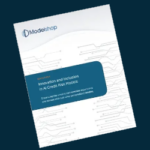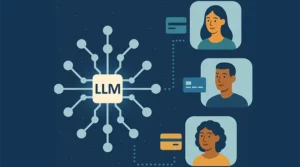The challenges big banks are having responding to the SBA’s Payroll Protection Program (PPP) is a foreshadowing of how lending is changing forever. Companies struggling to obtain relief financing are seeing stark difference between modern digital-first lenders and slower, more rigid banks. Some will point to the sheer volume of applicants the large banks are facing as the reason. I understand that volume adds complexity and scale, but I don’t think that’s the whole story. With the right automation tools, you can provide a friction-less and responsive application process for millions of loan applicants as effectively as thousands. The underlying problem is that many larger institutions do not have the flexibility in their custom lending platforms to be responsive to their clients during this crisis. As a result some businesses are reconsidering their long-term banking relationships as their current banks are failing to support them.
Customers will demand digital-first financial relationships
In the second half of 2020 consumer lenders will face a similar problem. People whose financial lives have been impacted by the shutdown will be looking for credit options, especially home equity and home refinancing. The problem is that our traditional credit origination platforms and decision models have not yet accounted for the new normal of our economy, and many lenders will not have the agility to respond with new programs quickly enough to help their customers.
Similar to the differentiation small businesses are seeing with digital-first lenders, consumers will see a difference between lenders who are agile enough to respond to the economy’s new normal and those who can’t get past their traditional lending programs and tools. The result will be an accelerated migration of customers from traditional banks to alternate digital-first financial services relationships. This is not different than the trend we’ve been seeing with FinTechs and alternate financing over the last decade, but this crisis will cause a massive speed-up of the process.
It’s time for financial IT to move past internal tech
As a vendor I’ve learned to tread lightly around IT organizations. Banks will claim that their business is more complicated than software providers think and that no one knows how to create technology for their business like they do. I respectfully challenge that claim. The fact that they build their technology solutions from the ground up is one of the main reasons large banks are not agile. Modern technology teams have learned to rely on mature low-code or no-code platforms that accelerate the delivery of digital-first solutions and increase an organization’s agility. We saw an early example of this evolution as banks finally stopped building custom dashboards and recognized that a business expert can configure a brilliant dashboard in a weekend using a top BI tool.
Digital-first banks will win in the New Normal
The rest of banking infrastructure will soon follow this same path. You don’t need custom software for customer management, on-boarding, loan decisioning or credit risk modeling. Some banks are starting to embrace this trend. We’re seeing more initiatives like technology innovation labs where IT teams can explore emerging technology that originates outside the organization, but there remains a deep-rooted bias towards build vs. buy. Banks who are able to embrace these new tools will be able to more quickly create digital-first solutions that can be customized by the business in days or hours. These agile and more cost-effective organizations will ultimately win in the new normal, and in the long run, customers will be the ones who benefit from our rapidly accelerating transformation of financial services technology.
Tom Tobin is Modelshop’s CEO and Founder. He has been building automated modeling solutions in the credit and fraud space for over 25 years as a technology leader at FICO, Fiserv, Oracle and HP.






